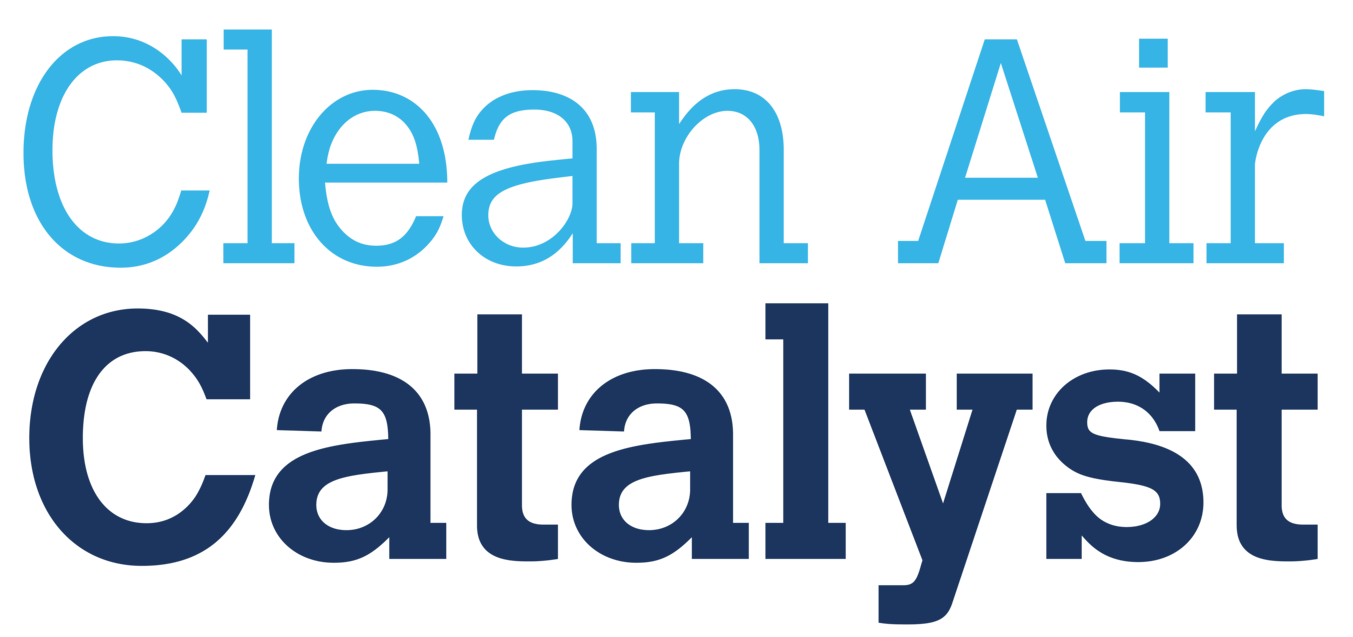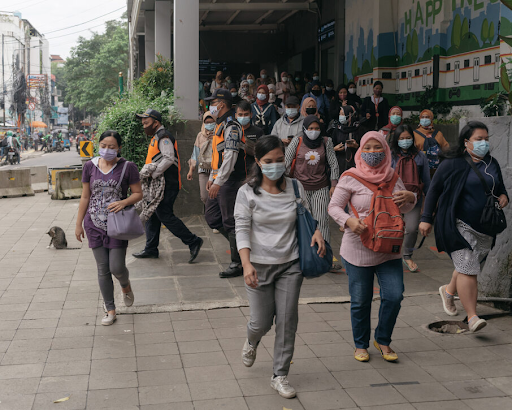7 Things to Know About Jakarta’s Air Pollution Crisis
Credit: Paulus Rusyanto / Dreamstime.com
By Beth Elliott, Fadhil Firdaus, Jorie Malsch, Paulista Surjadi, August 31, 2023
On August 31, 2023, Jakarta residents woke up to a thick blanket of haze and news that their city was again ranked the most polluted city in the world by Swiss technology company IQAir.
Air pollution spikes in the months of June, July and August are a regular feature of life in Jakarta, occurring annually with the onset of the dry season, following monsoonal patterns. This is when a lack of moisture in the atmosphere and other meteorological conditions combine with high emissions, mostly from the transport and industry sectors, to produce dangerously high levels of pollution. This year, El Niño and ever-rising human emissions have created an especially dangerous spike in pollution.
Below are seven things to know about air pollution in Jakarta, from its natural and manmade causes, to its health impacts, to what can be done now to reduce the number of bad air quality days and lessen the burden of pollution on Jakarta’s more than 10 million residents.
1. Weather Patterns Drive Pollution Spikes
Analysis by WRI Indonesia of data from 2019 to 2021 indicates the monthly average concentration of fine particulate matter, or PM2.5, follows the same pattern: a peak pollution season that can reach 40 - 80 micrograms per cubic meter (µg/m3) in June, July, and August (the dry season), followed by a decline during September to April (wet season).
Hotter temperatures, lack of rainfall, increased sunshine, and low wind speeds are all factors that increase air pollution in Jakarta’s surrounding atmosphere during the drier months. The low humidity and lack of wind cause the buildup of PM2.5 as well as PM10 and Black Carbon — additional forms of particulate matter that are associated with fossil fuel combustion, coal, and waste burning. Winds are further weakened by the natural thinning of the troposphere’s planetary boundary layer, especially during the evening hours. When coupled with the increase of PM2.5 emissions from rush hour traffic, this puts commuters and people living near roadways at particular risk of health impacts.
Sunlight and heat also play a role in exacerbating ground-level ozone (O3), a pollutant that is commonly experienced as haze which can impact lung and heart function. It is formed from the chemical reaction of Volatile Organic Compounds with Methane and Nitrogen Oxide, which are emitted from transport, industry and other sources, combined with the presence of sunlight. Historical data indicates that more unhealthy days in Jakarta have been the result of high levels of ground-level O3 rather than the more commonly tracked PM2.5.
2. El Niño Intensifies Weather’s Impact
In June 2023, Indonesia’s Meteorological, Climatological, and Geophysical Agency (BMKG) issued an El Niño warning that in the past has decreased rainfall intensity and resulted in a longer dry period. The figure below shows the relationship between rainfall and PM2.5 level at the Central Jakarta monitoring station in 2019 during the last El Niño when recorded rainfall reached almost negligible levels.
A minimum of 5mm of rainfall is required to directly decrease PM2.5 concentration in Jakarta, according to a 2021 study. This moisture is needed to disperse and wash away fine particles of pollution and emission droplets.
3. Dry Season Traps Emissions Near Surface
The Copernicus Atmosphere Monitoring Service (CAMS) Global Near-Real-Time forecasting system provides continuous and high-quality information on global air quality using a combination of observations from multiple sources with numerical model predictions. As CAMS shows, during the first two weeks of August 2023 there was an almost daily buildup of PM2.5 over the greater Jakarta area including South Jakarta, Depok and Bogor (Jabodetabek) and on the eastern side of Java in Surabaya, with concentrations occasionally exceeding the unhealthy level of 80 µg/m3. Low wind speeds moving eastward and other dry season conditions likely caused emissions to be confined nearer to the ground, trapping local pollution over these urban areas. This indicates that most of the dirty air that people have been breathing during this crisis period came from tailpipe exhaust and power generation sources within their own city borders.
Three hourly forecasts of pollution concentrations for the first two weeks of August 2023
Source: MAP-AQ using CAMS Global Near-Real-Time forecasting system
Work to further pinpoint the causes of Jakarta’s pollution is continuing through WRI Indonesia’s Clean Air Catalyst project funded by the U.S. Agency for International Development. The use of weather forecasting and atmospheric chemistry models, additional air quality monitoring, and other source attribution tools will add clarity on where Jakarta’s pollution is coming from, and from what sectors and industries. However, the limited existing research consistently points toward the same major sources and seasonal weather patterns that are responsible for the metropolitan area’s air quality crisis.
4. Transport is a Very Important Source of Jakarta’s Pollution
Credit: Clean Air Catalyst
Every day, 10 million commuters from satellite cities enter Jakarta, doubling its population and the number of cars traveling on its roads. As of 2018, there were 20 million motorized vehicles in the city, including 13 million motorcycles—numbers that have continued to grow at a rate of nearly 5% per year.
During this dry season’s recent pollution build-up, the city’s Environmental Agency recognized the major contribution of private transportation to Jakarta’s air pollution. A 2020 emissions inventory study found the transport sector contributed 67% of PM2.5 emissions, 58% of PM10 emissions, and 84% of Black Carbon emissions in 2019, with the main source being heavy-duty vehicles.
5. Industry and Power Plants Are Also Contributors
Power plant in North Jakarta. Credit: Clean Air Catalyst/Muhammad Fadhli
The same 2020 study, conducted by Vital Strategies in collaboration with the DKI Environment Agency, found that the second and third largest contributors to PM2.5 emissions in Jakarta are the manufacturing industry, followed by the energy sector. These sectors are also major contributors of secondary pollutants like Sulfur Dioxide (SO2) and Nitrogen Dioxide (NOx), which combine with other emissions to form PM2.5 and ground-level O3 pollution. The use of fossil fuels in shipping and aviation, as well as in the commercial and residential sectors, are additional contributors to PM2.5 and other pollutants.
Coal-fired power plants and processing plants that burn coal to make palm oil and food products are another pollution source coming from outside the boundaries of the metropolitan area. The Centre for Research on Energy and Clean Air compared PM2.5 levels collected from the U.S. Embassy’s monitoring station in Central Jakarta to estimate coal plant emissions and found that coal power contributed 5 to 31% of the total PM2.5 pollution, with an average contribution of 9%. Another study led by Dr. Puji Lestari of Bandung Institute of Technology indicates that pollution from coal plants is a particular concern during the wet season when prevailing winds carry the PM2.5 pollution generated by coal plants toward East Jakarta.
6. Air Pollution Significantly Impacts Public Health
Credit: Clean Air Catalyst
Although higher during the dry season, pollution levels typically remain elevated throughout the year. The annual average PM2.5 concentration was 39 ug/m3 in 2021 — more than double Indonesia’s National Ambient Air Quality Standard of 15 µg/m3, resulting in 139 days of unhealthy air.
Exposure to elevated levels of air pollution is the highest environmental risk factor for death and disability across the city and ranks seventh among all risk factors. A 2023 study found that over 7,000 adverse health outcomes in children, more than 10,000 premature deaths, and over 5,000 hospitalizations per year can be attributed to the city’s poor air quality. The same study also found economic loss due to PM2.5 and O3-related deaths and illnesses is around 2% of Jakarta’s provincial GDP, with the greatest costs in East Jakarta, amounting to $791 million in 2019. East Jakarta was also found to have the highest costs stemming from childhood stunting, one of the many health impacts of air pollution in children, in addition to asthma and other respiratory diseases, low birth weight, premature births, and infant mortality.
The World Health Organization recently revised its recommended guidelines for average annual exposure to PM2.5 to 5 µg/m3, indicating that exposure to even low levels of particulate matter can have health consequences. Analysis done by the Air Quality Life Index estimates that meeting the new World Health Organization guidelines for PM2.5 exposure could result in an additional two to three years of life expectancy for people living in Greater Jakarta.
7. Jakarta Can Move On Solutions Now
Credit: KAIN for WRI Indonesia
In September 2022, the Jakarta Environmental Agency introduced a Strategy for Air Pollution Control (SPPU), which included more than 70 action plans to improve air quality. These plans are classified under three main focus areas: 1) governing air pollution controls, 2) reducing emissions from mobile sources, and 3) reducing emissions from stationary sources. Each of these actions will require cross-sectoral collaboration, including by central and local governments, the private sector, and the public.
Subsequently, in August 2023, faced with a mounting air pollution crisis in Jakarta, President Joko "Jokowi" Widodo convened a limited cabinet meeting with key ministers and regional leaders. Their discussions centered on both short-term and long-term solutions to address the problem. Notably, the government announced emergency steps to shut down a charcoal factory thought to be a main source of pollution in East Jakarta, mandate vehicle emission testing and random emissions checks, and institute work-from-home policies for government civil servants.
This follows the rollout of free emissions tests at 317 testing locations for cars and 92 locations for motorcycles last year. The government is also considering the adoption of stricter fuel standards for private transport companies.
In the longer term, the government is investing in public transport, aiming to connect the city by adding new routes to the transportation network. To encourage ridership, microbus services that run through narrow streets and dense kampong (urban villages) are free to use. Also being considered are additional Low Emission Zones (LEZs), like the one recently launched in Jakarta’s Old Town. The Mass Rapid Transit (MRT) network is being expanded to include more lines and stations and TransJakarta buses are being modernized with cleaner fuel options, including the introduction of electric buses. Moreover, the introduction and expansion of Light Rail Transit (LRT) provides an alternative to short-distance road travel, as LRT stops connect residential areas to popular points of interest in the city.
Provincial government initiatives and policies — like expanding mass transit — play a central role in shaping the larger transportation landscape and addressing air pollution in Jakarta. The government must also pursue regional action with neighboring cities to enforce existing emissions standards on industries and power plants. Finally, the public can help bring these strategies to life by opting for low-carbon transportation, including walking or biking for shorter distances, and prioritizing use of public transportation to support the clean energy transformation. For those who are able, switching to an electric vehicle can reduce emissions from transportation.
A cleaner Jakarta can be built on the pillars of effective policy, collaboration, and community-driven initiatives. Individual choices matter, but the coalitions and combined actions — as well as the voice of the city's population — hold the potential to bring about more significant change.
Contributors and Reviewers:
Azka Ghaida, Khalisha Meliana, Idir Bouarar, Dimas Fadhil, Puji Lestari, Beatriz Cardenas






